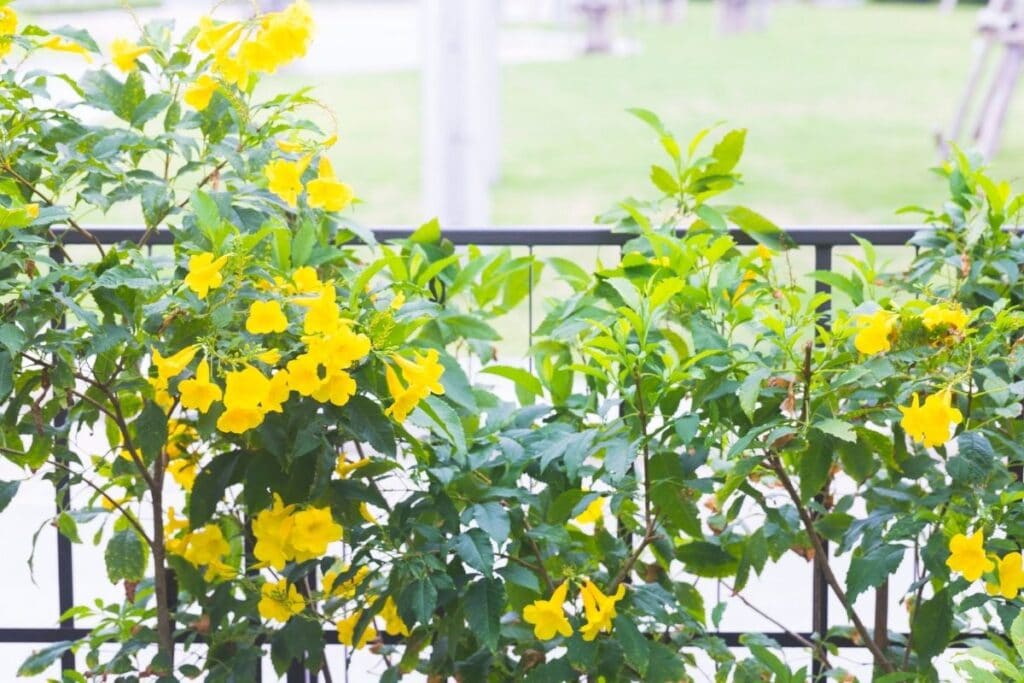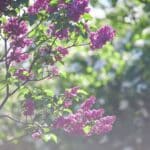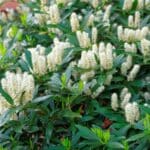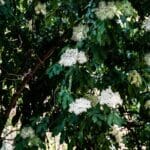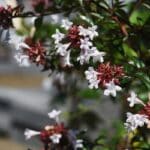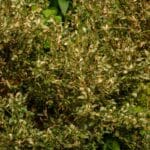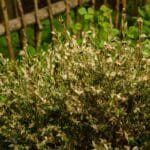If you live in a hot, tropical climate, and want more color in your outdoor environment, the esperanza plant might be just what you’re looking for. In this article, I’ll cover everything you need to know to grow and care for this shrub or small tree in your garden.
What Is An Esperanza
Esperanza is a woody shrub or small tree of the Bignoniaceae family. These plants have quite a few different common names, including yellow bells, trumpet flower, yellow trumpet flower, yellow trumpetbush, yellow elder, and yellow bignonia.
This colorful plant is a broadleaf evergreen in the tropical climates it prefers, but will also grow as a semi-evergreen herbaceous perennial in areas with light frost. In frost-free zones where the plant can grow uninterrupted, esperanza will happily become a large shrub or multi-stemmed tree up to about 25 feet (7.6m) tall and nearly as wide. Where growth is limited to a single season, this fast-growing plant can still reach a height of 3 to 6 feet (0.9-1.8m).
Esperanza is native to the tropical southern regions of the United States, the Caribbean, Mexico, and South America to Argentina. The plant grows readily in disturbed areas, often as a weed or even as a more serious invader when they escape cultivation outside of their native range.
Esperanza plants are not armed with thorns or spines. The olive-green leaves are compound and oppositely arranged. Each leaf consists of an odd number (up to 13) of toothed, 2-4 inch (5-10cm) long leaflets.
There are several naturally occurring varieties, with T. stans var. Angustata being a native of Texas. This variety is a little cold hardier than the tropical variety that is often available from nurseries. It is useful to know which variety you have because these plants from the drier regions will do better with less frequent watering that mimics the seasonal rainfall they experience in nature.
‘Gold Star’ esperanza is a popular Texan selection that trumpet shaped flowers profusely right through the year, or at least earlier than others where they freeze back in winter. Other great selections include ‘Orange Jubilee’ and ‘Sunrise’ (1).
Yellow Elder Flowers
Esperanza plants are prolific bloomers that can flower throughout the year where they are evergreen. The mildly fragrant yellow bell flowers are trumpet-shaped, and up to 2 inches (5cm) long. They are usually bright yellow, with red lines inside them, and occur on the ends of branches.
The flower color does vary from yellow through orange to red, however, depending on the cultivar. Long seed pods of up to 8 inches (20cm) are produced which hang from the branches. These seedpods are similar to green beans in appearance and are green when young, maturing to brown before splitting open and releasing the seeds.
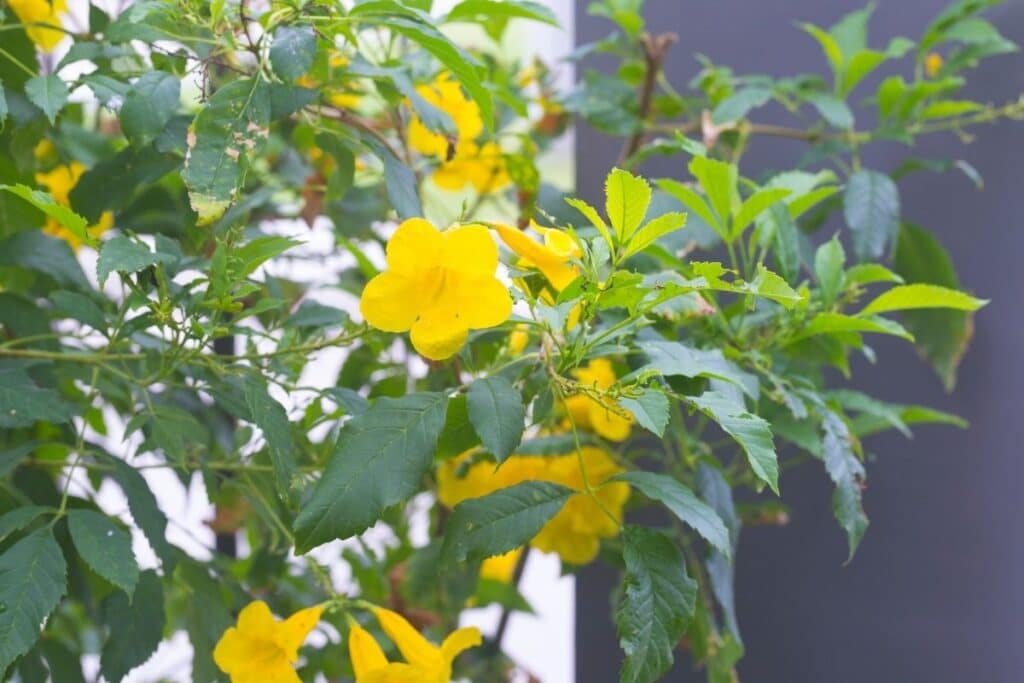
How To Grow An Esperanza Bush
Yellow bells shrubs can be grown from seed, collected from mature, brown seedpods, or from greenwood or root cuttings (2).
They prefer well-drained, rich soil that can support and maintain their fast growth. These plants are drought resistant but should be kept watered until established. For the best growth, however, the tecoma bush should be watered, but the soil left to dry out somewhat between watering.
Esperanza likes plenty of light and grows best in full sun. Heat is not a problem for this sun-loving tropical species. They can be grown outdoors in USDA Hardiness Zone 9, but really do best in zones 10 and 11.
In areas with frost, these plants will die back, growing a few feet tall in warm climates. In this environment, a layer of mulch can be very helpful to protect roots during frosts.
Care And Maintenance
Tecoma plant is a very fast-growing plant. In areas where the plants die back in winter, they can be cut back to ground level to resprout in spring. If grown in containers, these plants can be overwintered indoors in a warm and sunny position. Fertilizing is recommended to maintain this plant’s fast growth, especially if you water the plant regularly.
Esperanza plants grown in tropical climates will ultimately become large shrubs, or small, multistemmed trees. They can be kept to 6 or 7 feet (1.8-2.1m) with regular pruning, however. Removing old flowers and developing seed pods is a good way to encourage more flower development.
Yellow bells esperanza plants are not overly messy, but the dropped fruits should be collected for neatness. Removing the pods before they ripen and open will prevent the possibility of new plants popping up, especially where there is a risk of these drought tolerant plants becoming invasive.
Esperanza plants are generally very pest and disease resistant, although potted specimens grown indoors can be affected by pests such as aphids.
Uses
Horticultural Uses
Tecoma stans is very showy, which makes it a fine accent or specimen plant. It can also be grown in shrub borders and it is even possible to train these multi-stemmed plants as a showy small tree. In colder climates, they can be grown indoors in containers.
Human Uses
Some medicinal uses have been reported for these tecoma plants. They have also been used in the making of implements like bows, and plant parts are used for brewing beer.
Wildlife Uses
Tecoma tree is a great plant for attracting hummingbirds, especially the selections that have darker, orange flowers. They are also popular with insect pollinators like butterflies. Deer will, however, browse on this desert plant so keep this in mind if they have access to your property.
FAQs
How tall does the esperanza plant get?
In tropical, frost-free areas, these plants will grow as evergreen perennials and can reach over 20 feet (6m) in height if not controlled.
Is esperanza invasive?
Unfortunately, yellow bells shrub has become invasive in some states like Florida, and many other parts of the world including Asia, Australia, and Africa (3, 4).
How do you care for the esperanza plant?
Esperanza plants are easy to care for. They do appreciate regular watering and fertilizing to grow at their best. Deadheading old flowers will increase flower production, and regular trimming will keep the plants to a manageable size where evergreen.
How much sun does esperanza need?
Yellow bells plants like plenty of sunshine. A full sun location is recommended, although a site with afternoon partial shade will also be suitable.
Conclusion
With its beautiful yellow trumpet shaped flowers, Esperanza is about as bright and bold as any shrub out there. These fast-growing plants are easy to grow, provided you live in a warm enough climate. Growing one of these plants will be very rewarding and add plenty of color to your yard, just be sure to look up whether they are invasive in your area.
See more shrub varieties you can grow on our blog.
References
References
- Welsh, D. F. Esperanza (Tecoma Stans)
https://aggie-horticulture.tamu.edu/newsletters/hortupdate/2009/jun09/Esperanza.html
- Toogood, A. Plant Propagation: The Fully Illustrated Manual Of Practical Techniques
- North Carolina State Extension: Tecoma Stans
https://plants.ces.ncsu.edu/plants/tecoma-stans/
- Lusweti, A., Wabuyele, E., Ssegawa, P. & Mauremootoo, J. Tecoma Stans (Yellow Bells)
Close
*image by [email protected]/depositphotos

